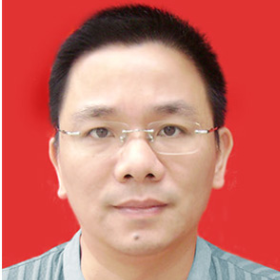
黄小荥,男,1969年生,博士,研究员,博士生导师。1990年7月大学本科毕业于厦门大学化学系,获理学学士学位;1994年至1998年为中国科学院福建物质结构研究所在职硕士生,导师卢绍芳研究员;2001年9月起在国外攻读博士学位,专业无机化学,导师李静教授,2006年1月获博士学位;2006年1月至2006年10月,在同一学校做博士后。1990年9月至1998年10月间,在中国科学院福建物质结构研究所,结构化学国家重点实验室工作,从事结构化学研究。1998年10月至2001年8月在国外做访问学者,2006年11月年回福建物质结构研究所工作至今,任课题组长。自1990年以来一直从事无机化学和结构化学方面的研究工作。已发表SCI杂志论文300余篇,其中第一作者14篇,通讯作者论文100余篇,包括J. Am. Chem. Soc. 第一作者3篇和通讯作者1篇、Angew. Chem. Int. Ed. 第一作者1篇和通讯作者6篇(其中2篇为热点论文)、Chem. Sci.通讯作者2篇和Coord. Chem. Rev.通讯作者3篇。获得美国专利1项,中国专利16项已授权。曾主持多项国家自然科学基金面上课题、重大研究计划培育项目,作为学术骨干参与多项国家自然科学基金创新群体、科技部973等项目研究。目前主持国家自然科学基金重大研究计划培育项目。
硕士招生专业:1)无机化学,无机有机杂化材料;2)材料与化工,无机功能材料
主要研究方向:
1. 无机-有机杂化金属卤化物基发光材料的研究;
2. 新型多孔材料的合成和性能研究;
3. 离子液体中的无机合成;
4. 主族金属基功能配位聚合物;
主要研究成果:
1. 设计合成了一类新基于II-VI半导体的无机-有机杂化纳米结构。这类化合物具有宽广的带隙可调性、高吸收系数和激子结合能、近乎零热膨胀、发白光、结构高度有序等特性。
2. 获得了多个系列具有良好离子交换性能的新型硫属多孔材料。
3. 利用离子液体获得了一系列硫属化物半导体量子点材料以及硫属化物多孔材料。
4. 利用离子液体获得了一类基于ns2金属离子的杂化发光卤化物材料。
联系电话:0591-63173145;邮箱:xyhuang@fjirsm.ac.cn
办公地点:福建省福州市闽侯县上街镇中国科学院海西研究院嘉锡楼440
课题组网页:http://www.fjirsm.cas.cn/Huangxy_group/
https://www.labxing.com/lab/460/home#__NO_LINK_PROXY
https://www.x-mol.com/groups/Xiaoying_huang
代表作:
Bing Hu, Wei-Yang Wen, Hai-Yan Sun, Yan-Qi Wang, Ke-Zhao Du, Wen Ma, Guo-Dong Zou, Zhao-Feng Wu, Xiao-Ying Huang*, "Single-Crystal Superstructures via Hierarchical Assemblies of Giant Rubik's Cubes as Tertiary Building Units", Angew. Chem. In. Ed. 2023, e202219025, DOI: 10.1002/anie.202219025.
Jian-Ce Jin, Nan-Nan Shen, Ze-Ping Wang, Ying-Chen Peng Xiao-Ying Huang*, “Photoluminescent ionic metal halides based on s2 typed ions and aprotic ionic liquids cations”, Coord. Chem. Rev. 2021, 448, 214185; DOI: 10.1016/j.ccr.2021.214185.(综述)
Zhi-Zhuan Zhang, Yang-Peng Lin, Jian-Ce Jin, Liao-Kuo Gong, Ying-Chen Peng, Ying Song, Nan-Nan Shen, Ze-Ping Wang*, Ke-Zhao Du*, Xiao-Ying Huang*, “Crystalline-Phase-Recognition-Induced Domino Phase Transition and Luminescence Switching for Advanced Information Encryption”, Angew. Chem. Int. Ed. 2021, 60(43), 23373-23379; DOI: 10.1002/anie.202110088.
Liaokuo Gong, Fuquan Huang, Zhizhuan Zhang, Yu Zhong, Jiance Jin, Ke-zhao Du*, Xiaoying Huang*, “Multimode dynamic luminescent switching of lead halide hybrids for anti-counterfeiting and encryption”, Chem. Eng. J. 2021, 424, 130544; DOI: 10.1016/j.cej.2021.130544.
Zeping Wang, Zhizhuan Zhang, Luqi Tao, Nannan Shen, Bing Hu,* Liaokuo Gong, Jianrong Li, Xianping Chen,* Xiaoying Huang* “Hybrid chloroantimonates(III): Thermally induced triple-mode reversible luminescent switching and laser-printable rewritable luminescent paper” Angew. Chem. Int. Ed. 2019, 58(29), 9974-9978; DOI: 10.1002/anie.201903945
Zhao-Feng Wu, Bin Tan, William P. Lustig, Ever Velasco, Hao Wang, X. Y. Huang,* Jing Li,* “Magnesium based coordination polymers: Syntheses, structures, properties and applications” Coord. Chem. Rev. 2019, 399, 213025; DOI 10.1016/j.ccr.2019.213025(综述)
Kai-Yao Wang, Mei-Ling Feng, Xiao-Ying Huang*, Jing Li, “Organically directed heterometallic chalcogenidometalates containing group 12(II)/13(III)/14(IV) metal ions and antimony(III)” Coord. Chem. Rev. 2016, 322, 41-68.(综述)
Ze-Ping Wang, Jin-Yun Wang, Jian-Rong Li, Mei-Ling Feng, Guo-Dong Zou, Xiao-Ying Huang* “[Bmim]2SbCl5: a main group metal-containing ionic liquid exhibiting tunable photoluminescence and white-light emission” Chem. Commun. 2015, 51, 3094-3097.
Wei-Wei Xiong, Jian-Rong Li, Bing Hu, Bin Tan, Ren-Fu Li, Xiao-Ying Huang* “Largest discrete supertetrahedral clusters synthesized in ionic liquids” Chem. Sci. 2012, 3, 1200-1204.
Jian-Rong Li, Zai-Lai Xie, Xiao-Wu He, Long-Hua Li, Xiao-Ying Huang* “Crystalline open-framework selenidostannates synthesized in ionic liquids” Angew. Chem. Int. Ed. 2011, 50, 11395-11399.
Bing Hu, Mei-Ling Feng, Jian-Rong Li, Qi-Pu Lin, Xiao-Ying Huang* “Lanthanide antimony oxohalides: From discrete nanoclusters to inorganic–organic hybrid chains and layers” Angew. Chem. Int. Ed. 2011, 50, 8110-8113.
Huang, X.-Y.; Roushan, M; Emge, T. J.; Bi, W.-H.; Thiagarajan, S.; Cheng, J.-H.; Yang, R.; Li, J.* “Flexible hybrid semiconductors with low thermal conductivity: the role of organic diamines” Angew Chem. Int. Ed. 2009, 48, 7871-7874.
Mei-Ling Feng, De-Nian Kong, Zai-Lai Xie, Xiao-Ying Huang* “Three-dimensional chiral microporous germanium antimony sulfide with ion-exchange properties” Angew. Chem. Int. Ed. 2008, 47, 8623-8626.(热点文章)
Huang, X.-Y.; Li, J.* “From single to multiple atomic layers: A unique approach to the systematic tuning of structures and properties of inorganic-organic hybrid nanostructured semiconductors” J. Am. Chem. Soc. 2007, 129, 3157-3162.
Huang, X.-Y.; Li, J.; Zhang, Y.; Mascarenhas, A. “from 1D chain to 3D network: tuning hybrid II-VI nanostructures and their optical properties” J. Am. Chem. Soc. 2003, 125, 7049-7055.
Huang, X. -Y.; Li, J.; Fu, H.-X. “The first covalent organic-inorganic networks of hybrid chalcogenides: structures that may lead to a new type of quantum wells” J. Am. Chem. Soc. 2000, 122, 8789-8790.
